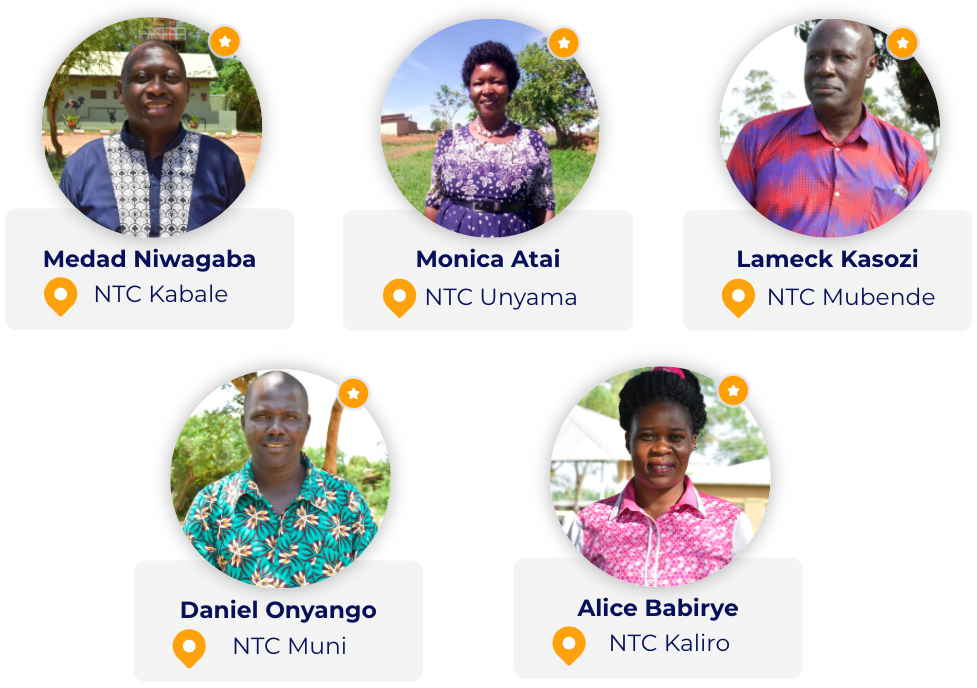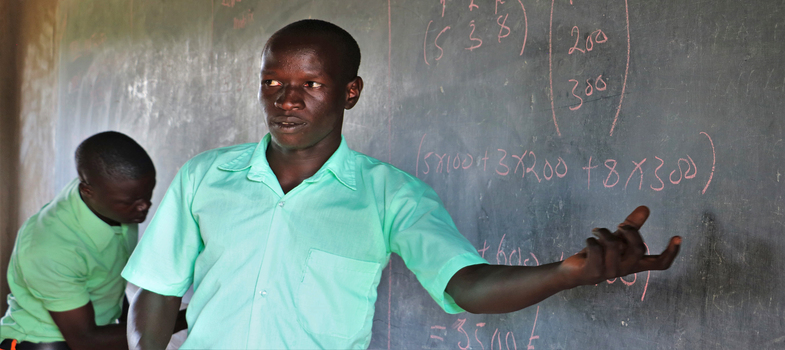Acknowledgements & references
This course was written by the Teacher Training Education Project, implemented by Enabel and the Ministry of Education and Sports in Uganda. Special gratitude goes to the Lecturers of General Methods working for the National Teachers' Colleges in Uganda; Monica Atai, Medad Niwagaba, Alice Babirye, Lameca Kasozi and Daniel Onyango.

Except for third party materials and otherwise stated (see terms and conditions), the content of this course is made available under a Creative Commons Attribution (CC BY-NC-SA). If any copyright owner inadvertently has been overlooked, the publishers of this course will be pleased to make the necessary arrangements at the first opportunity.
Acknowledgement is made to the following third party materials, sources which are not subject to Creative Commons Licensing:
- Video 1:
Kara Lise Forrest. (2016, June 10). Cognitivism [Video]. YouTube.https://www.youtube.com/watch?v=O62M4AxPhAs - Video 2:
Teaching in Education. (2017, September 25). Learning Styles & Multiple Intelligences: Theory Integration [Video]. YouTube. https://www.youtube.com/watch?v=FVg9n0l0Gf0 Video 3:
Common Sense Education. (2016, July 12). What are the 4Cs? [Video]. YouTube. https://www.youtube.com/watch?v=QrEEVZa3f98Video 4:
Teachings in Education. (2018, November 23). Classroom Arrangement Styles: Pros, Cons, & Analysis [Video]. YouTube. https://www.youtube.com/watch?v=2rjsPP-T7zQAudio 3:
Education Scotland. (2016, July 15). Dylan Wiliam: Formative assessment [Video]. YouTube. https://www.youtube.com/watch?v=sYdVe5O7KBE&t=14s
FIGURES
- Figure 1:
Ivan Pavlov. (n.d.). [Digital Image]. Commons.Wikimedia. https://commons.wikimedia.org/wiki/File:Ivan_Pavlov_LIFE.jpg
Unknown author / Public domain Figure 2:
John Broadus Watson. (n.d.). [Digital Image]. Commons.Wikimedia. https://commons.wikimedia.org/wiki/File:John_Broadus_Watson.JPG
Unknown author / Public domainFigure 3:
Msanders Nti. (2015, May 12). B.F. Skinner [Digital Image]. Commons.Wikimedia. https://commons.wikimedia.org/wiki/File:B.F._Skinner.jpg
Msanders nti / CC BY-SAFigure 4:
Jean Piaget in Ann Arbor. (n.d.). [Digital Image]. Commons.Wikimedia. https://commons.wikimedia.org/wiki/File:Jean_Piaget_in_Ann_Arbor_(cropped).png
Unknown author / Public domainFigure 5:
Lev-Semyonovich-Vygotsky-1896-1934. (n.d.). [Digital Image]. Commons.Wikimedia. https://commons.wikimedia.org/wiki/File:Lev-Semyonovich-Vygotsky-1896-1934.jpg
Unknown author / Public domainFigure 6:
Adapted from, Dcoetzee. (2012, August 27). Zone of proximal development [Digital Image]. Commons.Wikimedia.https://commons.wikimedia.org/wiki/File:Zone_of_proximal_development.svg
Dcoetzee / CC0Figure 7:
BTC Uganda, The Belgian Development Cooperation, & Ugandan Ministry of Education, Sciences, Technology & Sports. (n.d.). Bloom’s Taxonomy - The cognitive domain [Illustration]. In Active Teaching and Learning: A focus on principles and practices of learner centered pedagogy as a teaching approach to achieve quality education (p. 18).Figure 8:
Yeruhamdavid. (2016, April 15). Benjamin Bloom [Digital Image]. Commons.Wikimedia. https://commons.wikimedia.org/wiki/File:Benjamin_Bloom_photo.jpg
Yeruhamdavid / CC BY-SAFigure 9:
Adapted from, Yale. (n.d.). Varieties of Classroom Seating Arrangements [Digital illustration]. Https://Poorvucenter.Yale.Edu/. https://poorvucenter.yale.edu/ClassroomSeatingArrangementsFigure 10:
Adapted from, ssat. (2016, October 18). Gibbs’ Reflective Cycle [Digital illustration]. ssatuk. https://www.ssatuk.co.uk/blog/how-to-develop-more-reflective-practitioners/
CONTENT
BTC Uganda, The Belgian Development Cooperation, & Ugandan Ministry of Education, Sciences, Technology & Sports. (n.d.-a). Active Teaching and Learning: A focus on principles and practices of learner centered pedagogy as a teaching approach to achieve quality education (1st ed.). Enabel, the Belgian development agency.
Consult hereKyambogo University, Enabel, & Ministry of Education and Sport For the Republic of Uganda. (2018). Revision of the General Methods Course (Revised ed.). Kyambogo University.
Consult here
Tell us what you think of this course START TOPIC 1: Learning and cognition
